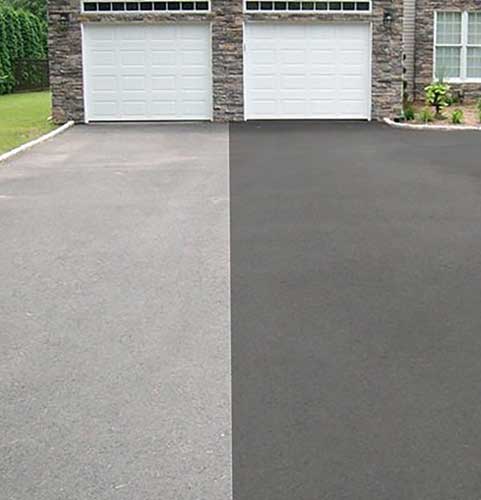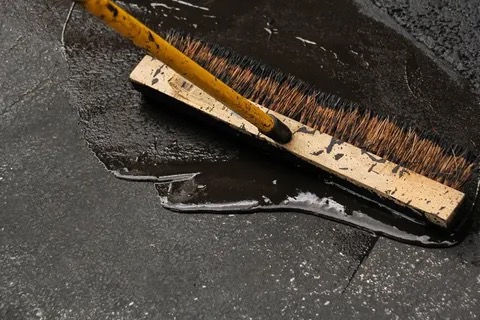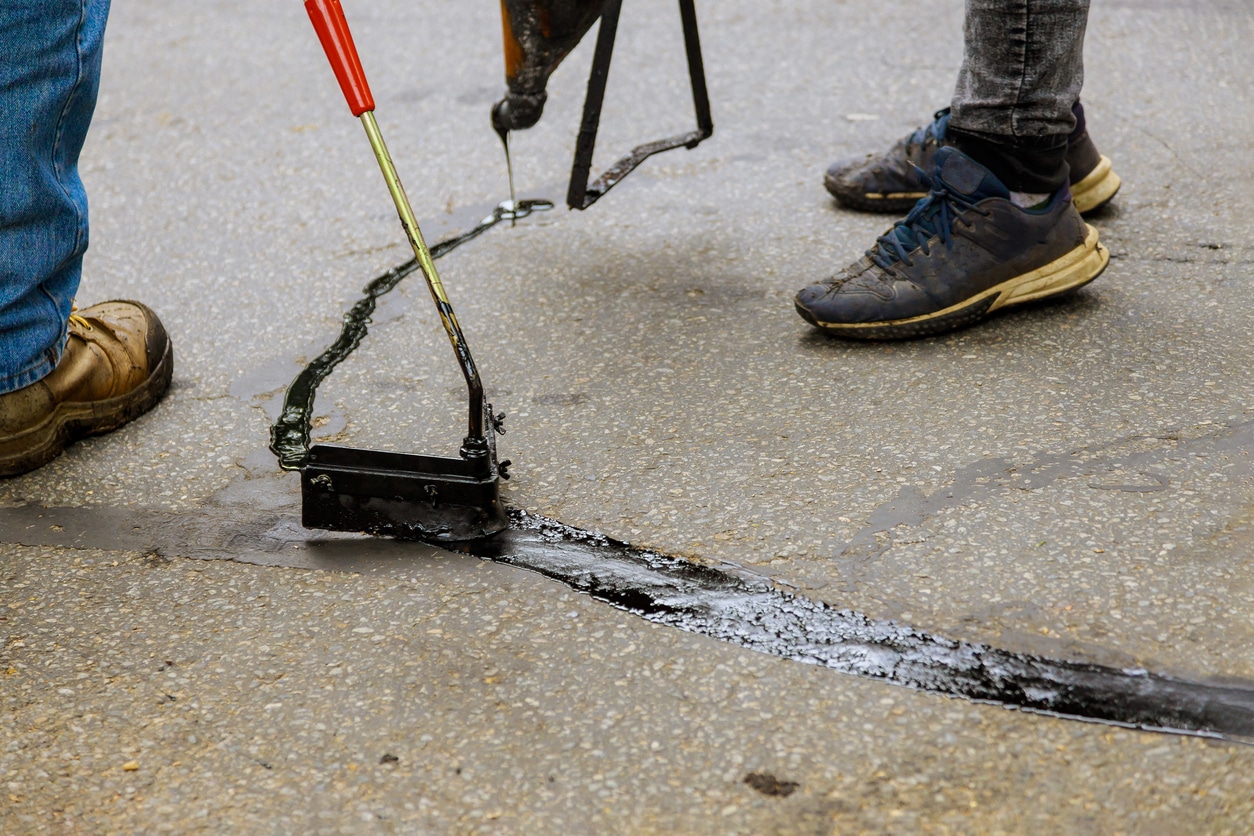Elevate Commercial Appeal: Hot Mix Asphalt Sealing for Angled Parking Lots
Elevate Commercial Appeal: Hot Mix Asphalt Sealing for Angled Parking Lots
Blog Article
Hot Mix Asphalt: A Sustainable Option for Sidewalk
Warm Mix Asphalt (HMA) has emerged as a leading lasting option for sidewalk services, providing a myriad of environmental advantages and ingenious modern technologies. As the need for environment-friendly building practices expands, checking out the subtleties of HMA's sustainability can give beneficial understandings into the future of pavement options.
Environmental Advantages of Hot Mix Asphalt

Moreover, Hot Mix Asphalt assists to alleviate city heat island results. Its dark color soaks up sunlight, lowering the quantity of warmth showed back right into the environment contrasted to lighter-colored pavements. This can lower ambient temperatures in city locations, reducing the demand for cooling and ultimately minimizing energy consumption.
Furthermore, Hot Mix Asphalt adds to boosted stormwater administration. Its porous nature permits water to penetrate the sidewalk and reenergize groundwater materials, lowering overflow and the danger of flooding. These ecological advantages make Hot Mix Asphalt a lasting choice for paving roadways and freeways.
Energy Performance in HMA Manufacturing
Is energy efficiency an important element in the manufacturing of Hot Mix Asphalt (HMA)? Absolutely. Energy plays a significant duty in the production of HMA, affecting both cost and ecological sustainability. One key aspect of energy effectiveness in HMA production is using cozy mix asphalt (WMA) technologies (angled parking). WMA enables the blending and placement of asphalt at lower temperatures compared to traditional hot mix asphalt, leading to decreased power usage during manufacturing. This procedure not just reduces fuel usage however additionally lowers greenhouse gas exhausts, making it an extra ecologically friendly choice.
Furthermore, improvements in plant technologies have actually led to more energy-efficient HMA manufacturing procedures. By enhancing energy use in HMA production, the market can lower its carbon impact while preserving premium sidewalk products.
Recyclability of Warm Mix Asphalt
The recyclability of Hot Mix Asphalt (HMA) is a crucial aspect of its sustainability and long-term ecological effect. HMA is among one of the most recycled products in the United States, with over 100 million lots of redeemed asphalt pavement (RAP) being reused annually in new pavement building. Reusing HMA supplies numerous ecological advantages, such as lowering the need for virgin materials, lowering energy consumption during manufacturing, and decreasing the quantity of waste sent to land fills.
The procedure of recycling HMA involves milling the existing pavement, crushing it into smaller pieces, and blending it with brand-new click for info aggregate and asphalt binder to produce a recycled mix. In general, the recyclability of HMA plays a substantial role in advertising sustainable practices within the pavement market.

Long-Term Performance of HMA
Asphalt pavements show longevity and resilience over a prolonged duration, reflecting the lasting efficiency of Hot Mix Asphalt (HMA) The long life of HMA can be credited to its ability to stand up to rush hour loads, extreme weather, and the effects of aging. Studies have revealed that well-designed and effectively created HMA pavements can last for 20 years or even more with regular maintenance. The secret to taking full advantage of the lasting performance of HMA depends on using high-grade products, complying with ideal methods in building, and implementing reliable upkeep methods. Correct drain, routine examinations, and prompt repair work are important for preserving the structural honesty of HMA pavements gradually. In addition, innovations in HMA modern technology, such as using polymer-modified binders and warm mix asphalt, have additionally improved the toughness and longevity of HMA pavements. By focusing on top quality construction and maintenance methods, HMA proceeds to verify itself as a lasting and cost-efficient service for long-lasting pavement framework.

HMA: Toughness and Sustainability
Demonstrating both resilience and sustainability, Warm Mix review Asphalt (HMA) has become a foundation in the building and construction of durable sidewalk frameworks - commercial parking lot paving. HMA's sturdiness comes from its capacity to endure heavy lots, rough weather, and high traffic quantities, making it a reputable selection for roads, freeways, and airport runways. The composition of HMA, which generally consists of aggregates, binder, and filler, plays an essential function in enhancing its long life and resistance to deterioration
Moreover, HMA's sustainability depends on its recyclability and energy-efficient production procedure. The ability to reuse reclaimed asphalt sidewalk (RAP) in new HMA mixtures lowers the need for virgin materials and decreases the ecological influence of sidewalk construction and maintenance. Additionally, the power effectiveness of generating HMA lies in its reduced mixing temperatures compared to various other pavement products, causing decreased power intake and greenhouse gas emissions.
Conclusion
Finally, warm visit their website mix asphalt (HMA) offers a lasting remedy for sidewalk with its eco friendly features. HMA's recyclability, power effectiveness in manufacturing, and long-term resilience make it an eco-friendly option for roadway building. By conserving natural deposits, lowering waste, and decreasing greenhouse gas exhausts, HMA plays a vital function in promoting sustainability in infrastructure development. Its capability to alleviate urban warmth island effects further underscores its importance in developing environmentally mindful and resilient sidewalk systems.
HMA is one of the most recycled materials in the United States, with over 100 million bunches of redeemed asphalt sidewalk (RAP) being recycled yearly in brand-new pavement building.The procedure of recycling HMA includes milling the existing sidewalk, crushing it right into smaller sized items, and blending it with new accumulation and asphalt binder to develop a recycled mix.Asphalt sidewalks demonstrate longevity and durability over a prolonged period, mirroring the lasting efficiency of Warm Mix Asphalt (HMA) In addition, advancements in HMA technology, such as the use of polymer-modified binders and cozy mix asphalt, have further enhanced the sturdiness and longevity of HMA sidewalks. The capability to reuse redeemed asphalt pavement (RAP) in brand-new HMA mixtures minimizes the demand for virgin materials and reduces the ecological effect of sidewalk building and construction and maintenance.
Report this page